Family Road Trip in Denmark – 10 Days of Cool Adventures
by Monika Suchoszek
We always travel during the summer months when school is closed, but after last year’s heat in Spain, we were determined to find a cooler destination. Denmark turned out to be the perfect choice, mild weather, beautiful scenery, and a relaxed pace of life. We spent 10 full days in Denmark in the second half of August, a wonderful way to recharge before the start of the new school year. The weather was exactly as we hoped: 18–24°C, a bit windy at times, and only a few brief moments of rain. Perfect conditions for a family road trip!
Our Route and General Impressions
When planning the trip, I ambitiously marked spots across the entire country, but quickly realized it would be impossible to see everything. In the end, we created a 1,500 km loop, visiting four out of Denmark’s five regions: Sjælland (Zealand), Syddanmark (Southern Denmark), Midtjylland (Central Jutland), Hovedstaden (Capital Region). The only one we skipped was Nordjylland (North Jutland). A clever way to shorten driving distances was by taking the ferry between Jylland and Sjælland. It saved us time, added variety to the trip, and let us return to Copenhagen from the west side of the country without repeating the same route. See details of our route on the Google Map below:
Travelling with a four-year-old required flexibility and frequent changes of plan, but Denmark turned out to be one of the most family-friendly countries we’ve ever visited. There were countless public toilets and amazing playgrounds, often located in scenic places and surrounded by nature, a true blessing for anyone travelling with small children! Architecturally, I expected to see tiny, colorful wooden houses like in Iceland, but most homes resembled those in Germany, simple, neat, and modern. We did find some charming historical spots though, such as Sønderho and Ribe, where old wooden houses create postcard-perfect scenery.
Getting Around – Transportation Tips
We rented a car from Sixt, picking it up and dropping it off at Copenhagen Airport. The process went smoothly overall, though we had two small issues: The prepaid Storebælt Bridge pass didn’t work, and we had to pay again at the gate with a credit card. Sixt later refunded the fee but I had to send them multiple emails. They also never explained why this situation happened. They should not offer bridge tickets if this service doesn’t work properly. During drop-off, all designated Sixt spots were full, and we had to wait for an employee to move a car before we could park which made us nervous about being at the airport on time. Note that we were dropping off the car just before office opened and probably this issue doesn’t happen if you drop off the car after 6am when the office is open and employees are there. Despite these moments, the rental experience was positive. Our Opel Corsa was clean, easy to drive, and perfect for Danish roads. To reach the rental office, take the free shuttle bus from the airport (in front of the Clarion Hotel, every 20 minutes), the ride takes about 10 minutes.
Driving in Denmark was a pleasure with calm drivers, beautiful roads, and good infrastructure. Headlights must be on at all times, even during the day. The only difference I noticed was the rule on how to merge when entering the highway. I was surprised not to see the dotted line marking the end of the merge point which was often much shorter than in Belgium. Apparently both drivers on the ramp and those on the main road should adjust their speed to allow smooth merging, and that was actually happening. Cars were changing lanes immediately or slowing down, so we could always enter the highway without needing to stop. Typical speed limits are: 50 km/h in towns, 80 km/h outside towns, 110–130 km/h on highways
Tolls and Ferries:
- Storebælt Bridge: 230 DKK (31€)
- Fanø Island ferry: 299 DKK (40€)
- Aarhus–Sjælland ferry: 560 DKK (75€, book early, prices rise quickly!). Area marked with green outline on the photo below is indicating where you can take a seat without having a reservation, everything in the front of the ferry is either business blueclass, restaurants or shops.
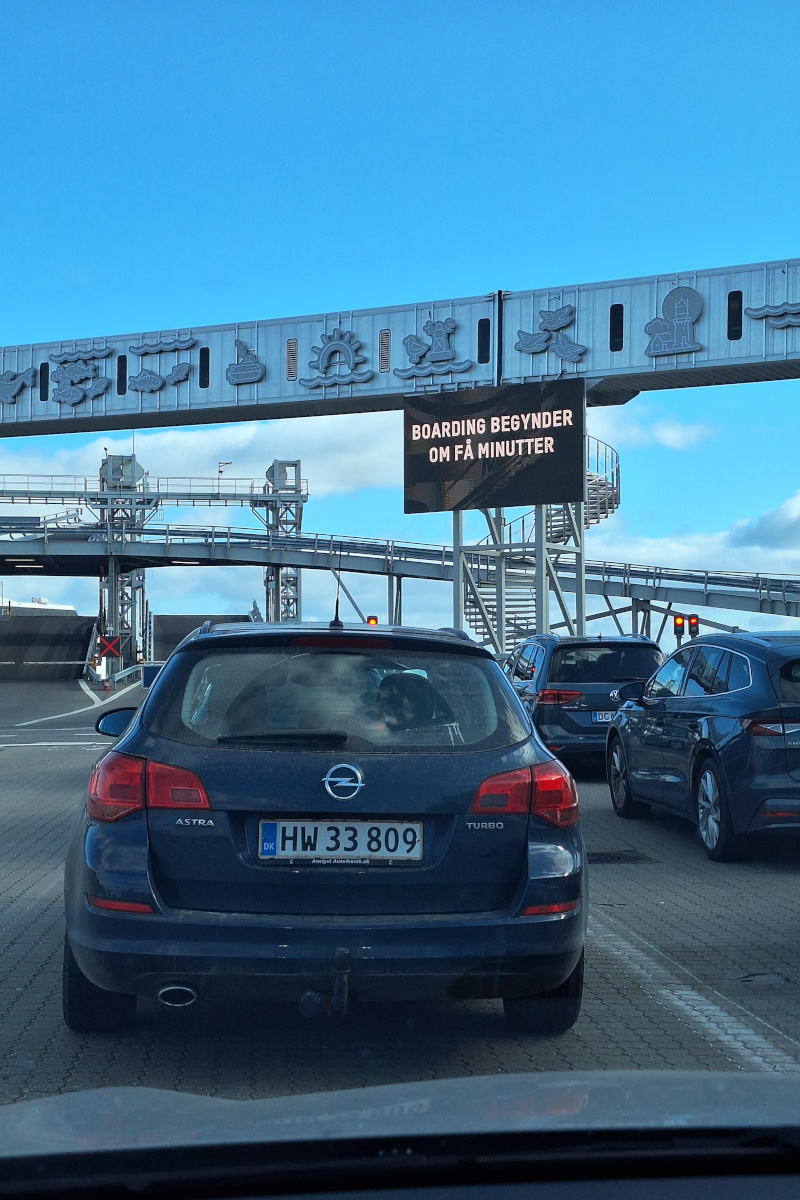
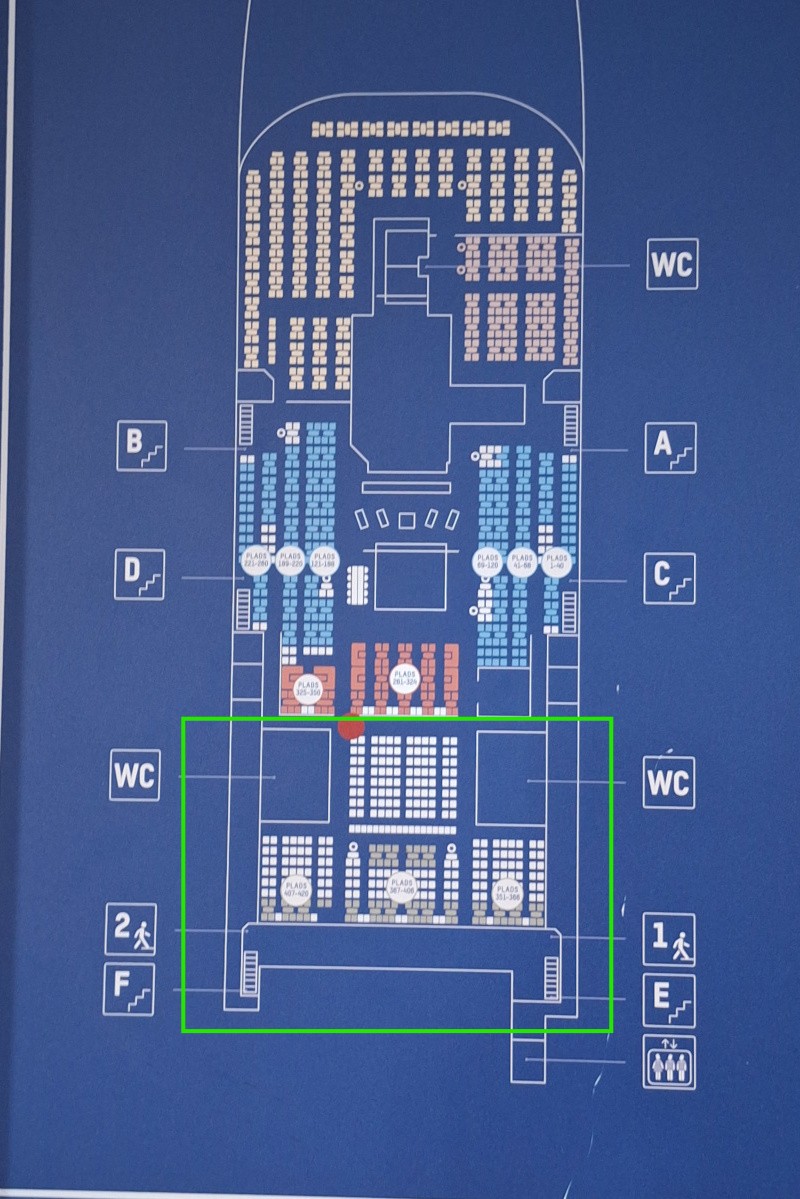
Parking: mostly free outside cities, but expect fees near major attractions. On the below photo (left) you can see sign that allows to park for free for 2 hours, but you can not park for longer in that zone, even if you would like to pay for additional time. Tip: check recent Google Maps reviews for parking, prices can vary a lot. Fuel prices ranged between 13.39–13.89 DKK/litre (1.8€/l), with Ribe being the cheapest area.
- Møns Klint: 45 DKK/day (6€)
- Stevns Klint: 50 DKK/day (6,7€) Very limited free parking in the nearby village. We were there at the end of the day when it was empty so we parked on one of the side streets.
- Aarhus: 24 DKK/hour (3,2€); other towns ~7 DKK/hour (0.9€)
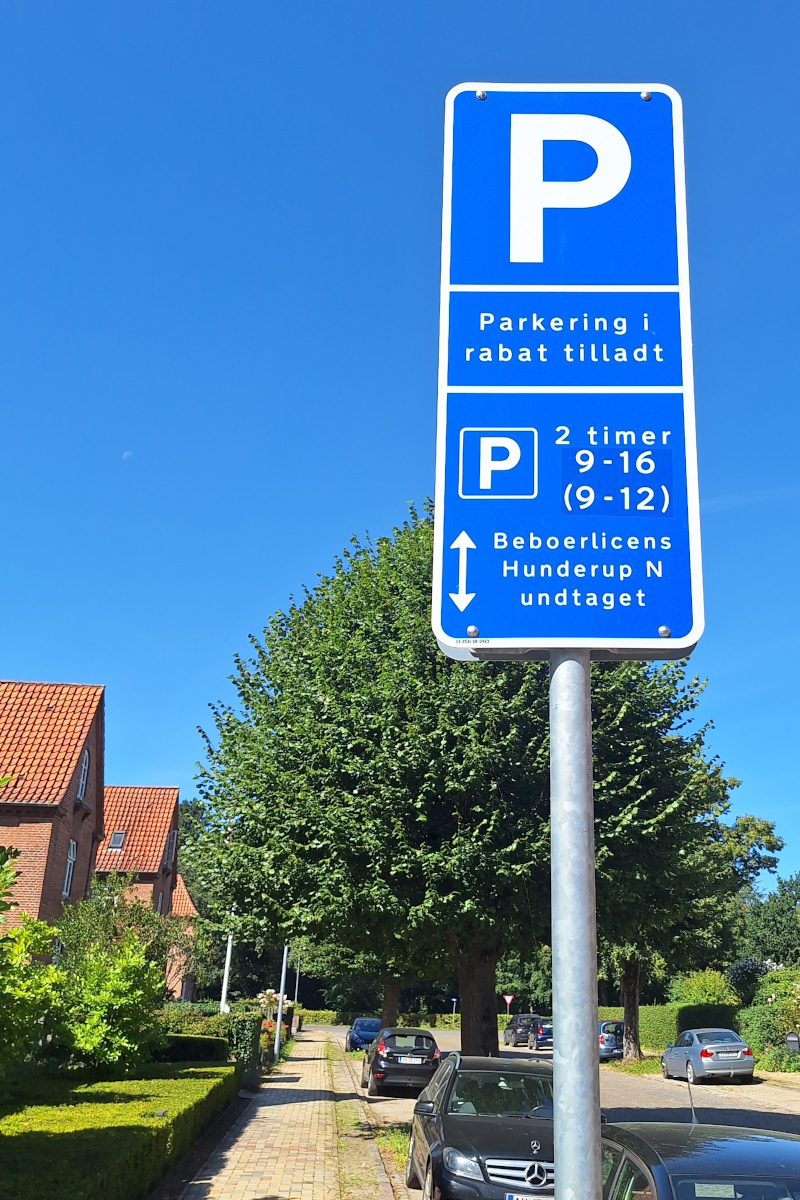
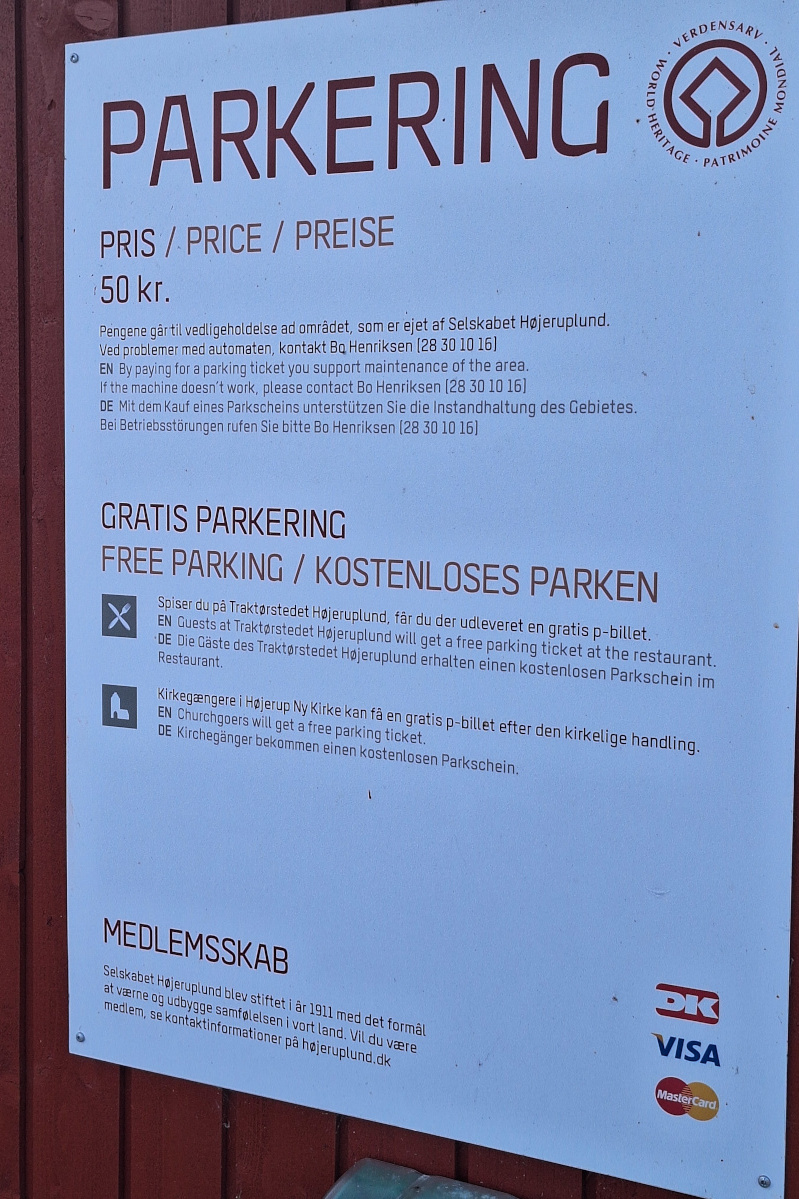
Visiting Copenhagen by Train
Locals advised us not to drive into Copenhagen due to parking costs (16–44 DKK/hour, 2-6€/hour), check here for more details. Instead, we parked for free at Køge station and took the train. Tickets can be expensive (regular ticket around 60-70 DKK one way, 9€), but DSB Orange Tickets are a great discounted option (20–28 DKK per person, 3-4€), but available only at selected time slots. The train ride takes around 40min, but you can get off the train at multiple station in the heart of the city without spending time on looking for parking spot. We bought our tickets a week ahead of time.
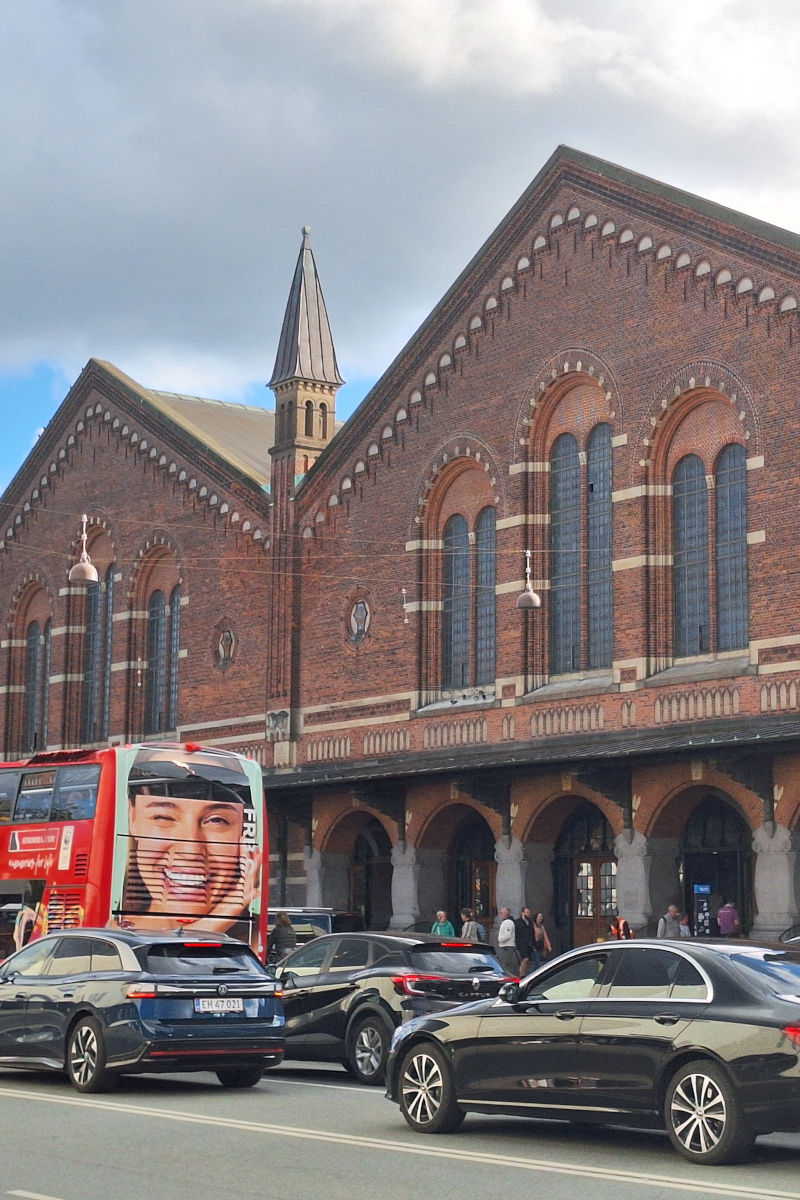
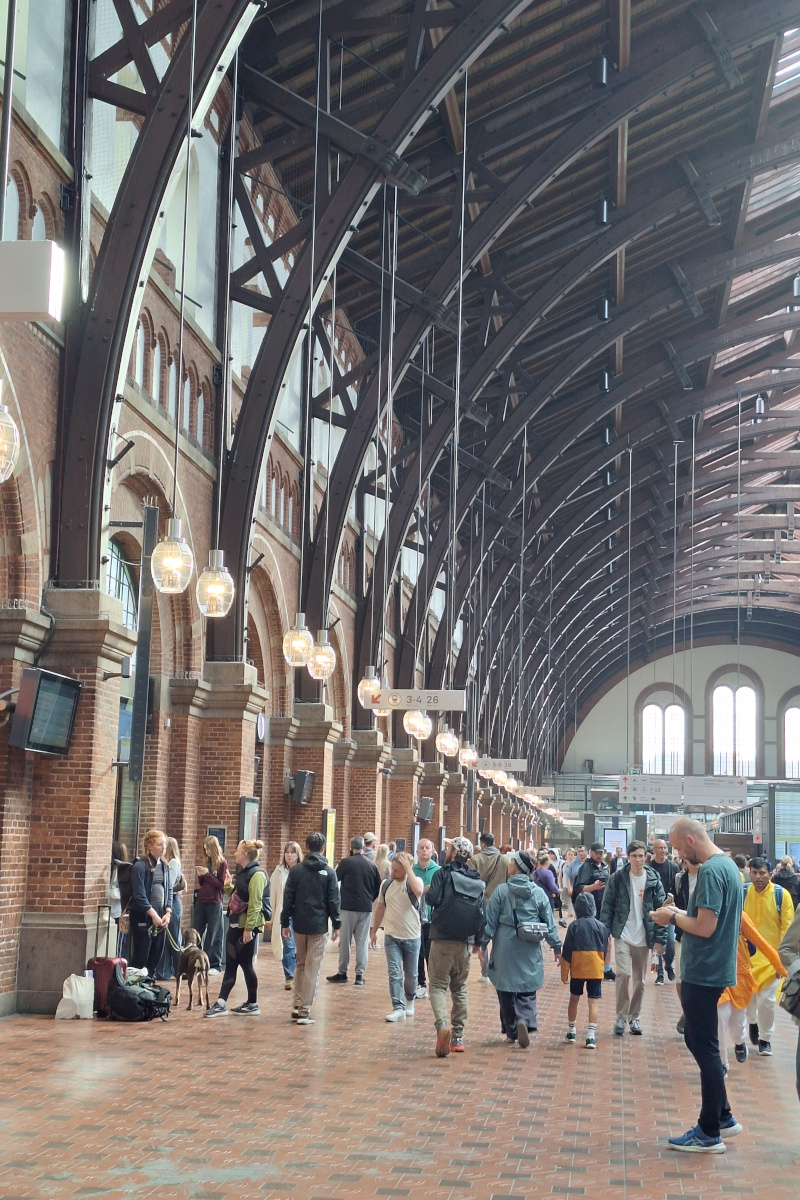
Accommodation
We stayed in Airbnb apartments across the country, almost always entire flats, usually outside cities where prices were lower, and it was easier to park with the car. Copenhagen was expensive, so we chose to stay twice in the Køge area, a perfect base for day trips to the capital. Most apartments had self check-in via lockbox, and in several places, the hosts greeted us personally and shared useful local tips.
- Average cost: €110 per night
- Booking minimum 4–6 months ahead is ideal for good deals
- Average rating: 4.9+
The AirBnb places we are happy to recommend:
Food & Eating Out
Dining out in Denmark is expensive, expect to pay €30–40 per person for a meal with a drink in cheap restaurants. Even simple street food like fish and chips costs 100–140 DKK (13-19€). That’s why we mostly cooked in our apartments, which all had excellent kitchens, including oven. Supermarkets like Lidl and Rema 1000 were our favourites for value and choice. We had to buy groceries in small amounts since we changed locations frequently and didn’t want food sitting in the car.
Exemplary prices:
- Ice cream: from 50 DKK per scoop (6,7€)
- Bakery sweets: 40–50 DKK (5,4€-6,7€) Local restaurant highlight: fresh fish or hearty Danish burger with chips and homemade gravy, delicious!
Budget Overview (for 10 days, 2 adults and four-year-old child)
| Category | Total Cost (€) |
|---|---|
| Flights | 423 |
| Transportation (car, fuel, ferries, tolls, parking, train) | 1,123 |
| Accommodation | 1,120 |
| Restaurants | 186 |
| Groceries | 204 |
| Activities | 80 |
| Total | 3,136 |
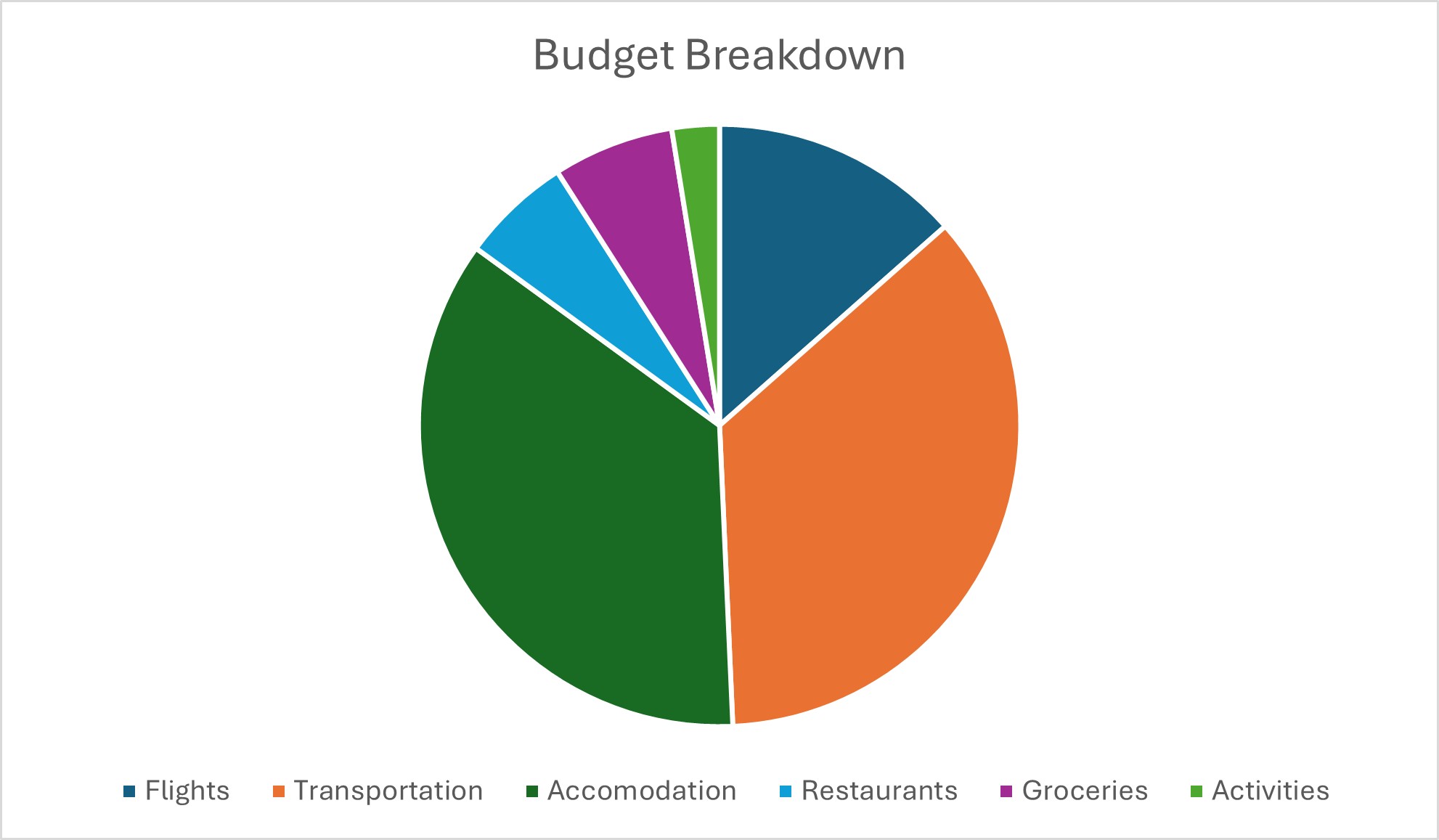
Our Experience of Travelling with a Child
We feel like this is, so far, the most kid-friendly country we have visited. The playgrounds were incredible, we had so much fun as a family. Very often, the playgrounds are located in forests, surrounded by beautiful nature, and they also feature many wooden sculptures of animals. All the playgrounds were well maintained and mostly made of wood, so they blended naturally into the surroundings rather than disrupting them. The Skovlegeplads playground on Fanø Island even had tiny wooden cars that you could use to help your kids cover the last couple of hundred meters leading deeper into the forest to the playground.
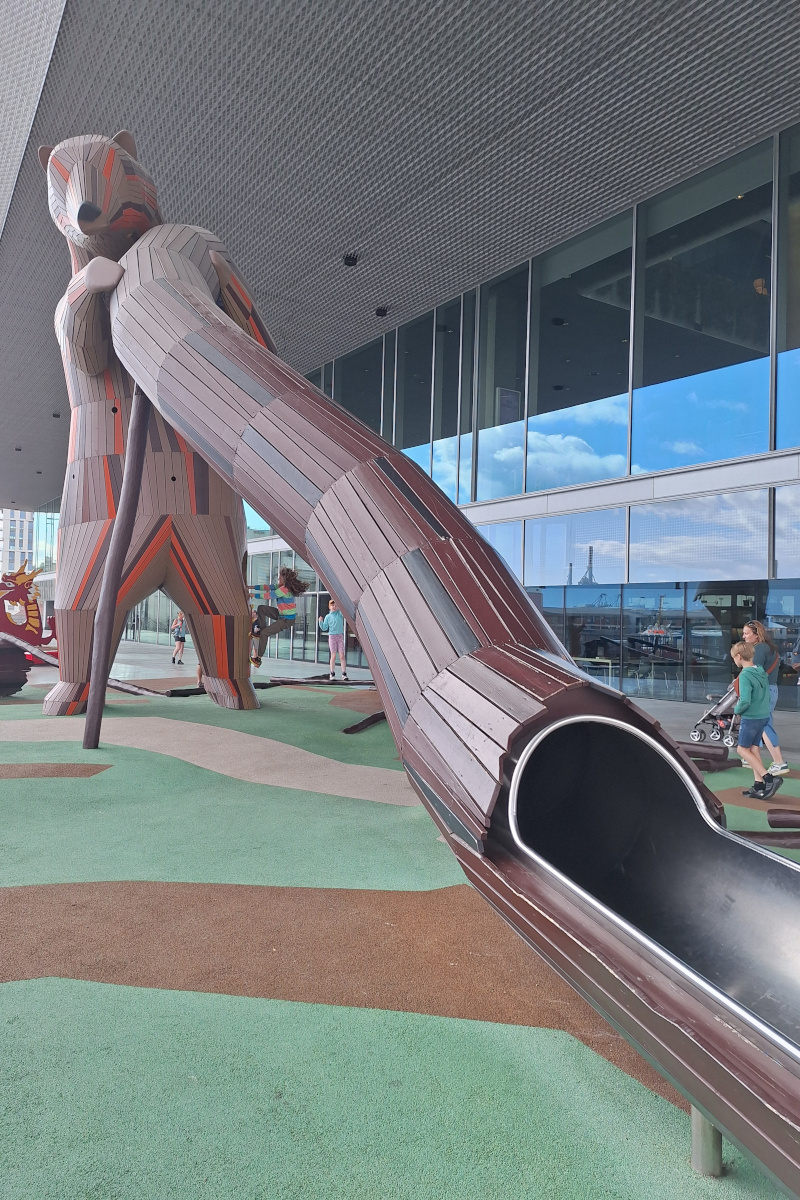
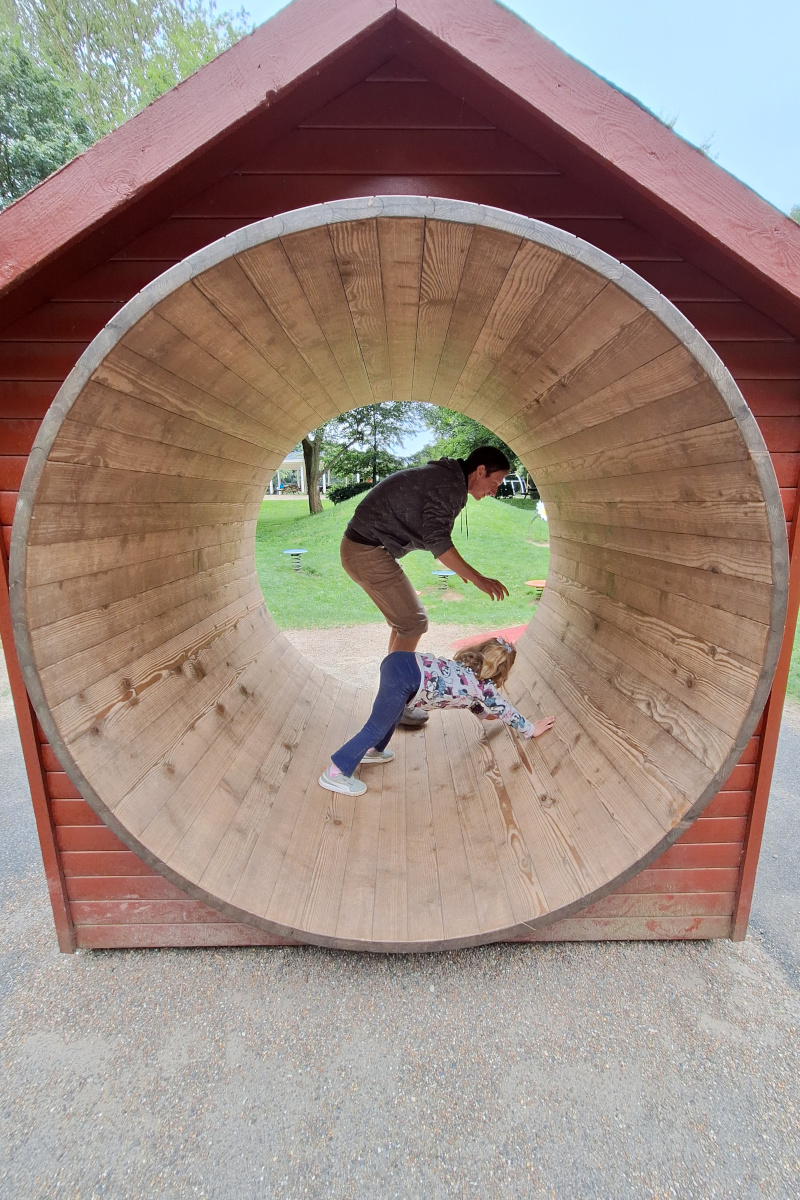
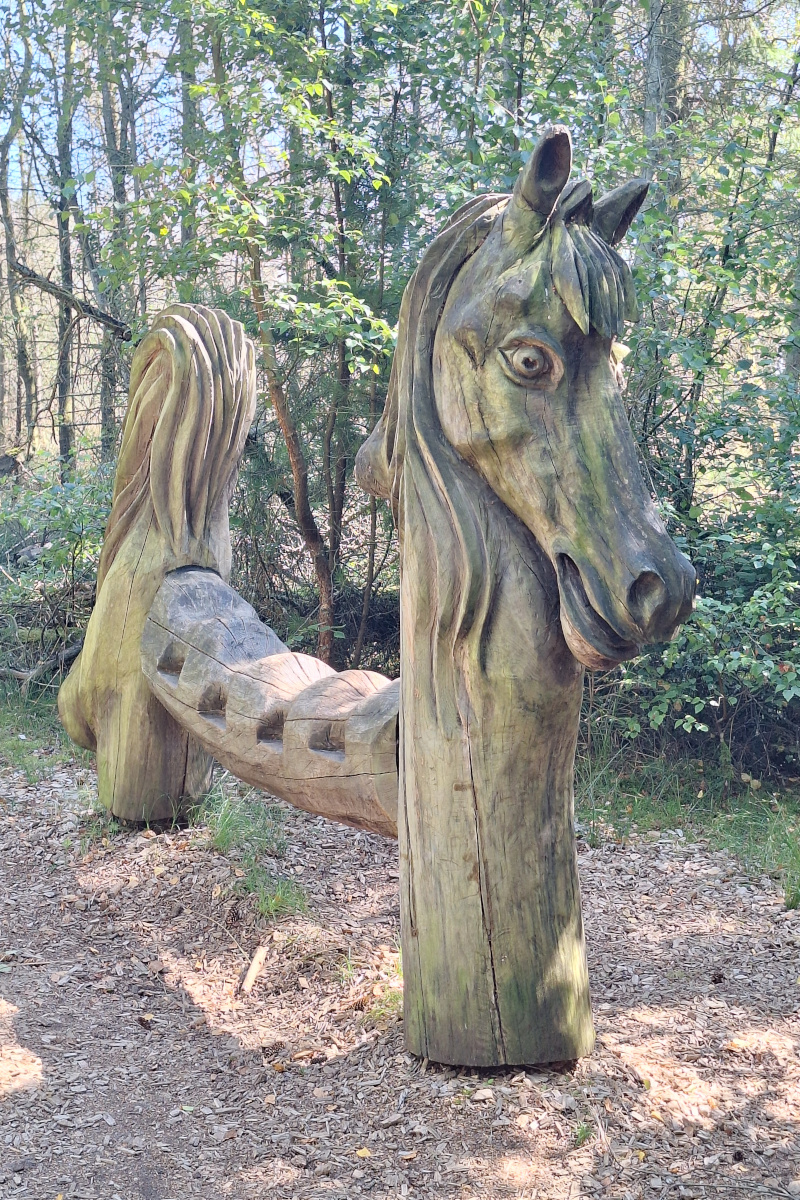
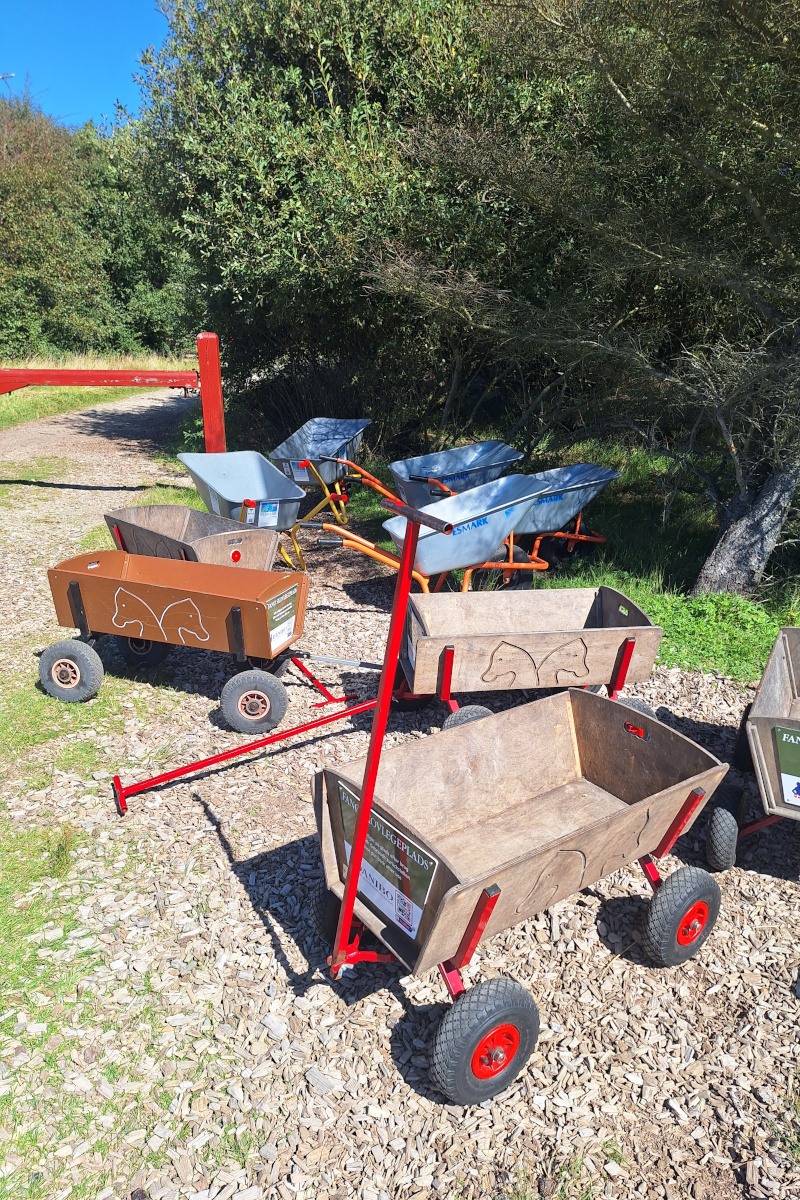
We also visited several family-oriented attractions, including a Viking museum with period-accurate blacksmithing demonstrations (worth to check which museum has some special event during your stay since there are so many viking museums to choose), and the beautiful Frederiksborg Castle, where kids can join a treasure-hunt-style activity. It was a perfect balance between culture and playtime. There were also sea-related museums, science museums, and a Sand Sculpture Festival, but that was just too much for our stay since we already had a very full schedule.
Other family highlights:
- Free public toilets almost everywhere (at the entrances to beaches, next to parking, toilet automates in the cities)
- Nice playgrounds even at gas stations
- Five out of six apartments had toys waiting for our daughter, such a thoughtful touch that saved our evenings and mornings. Since our daughter was sleeping in the car while driving during the day, which helped us tremendously, we had to pay a price for this, she was going to sleep late in the evenings. It really does not happen often that there are some toys in the apartments when we travel in other countries.
If your kids like fairy-tale adventures, try finding Thomas Dambo’s wooden trolls (there are about 60–70 across Denmark, see Troll Map for more details. Our daughter got scared by the first one (Troll nr81, left photo below), but it’s a fun activity for older kids! The second troll below is the one in famous Christianshavn neighbourhood, called Green George.
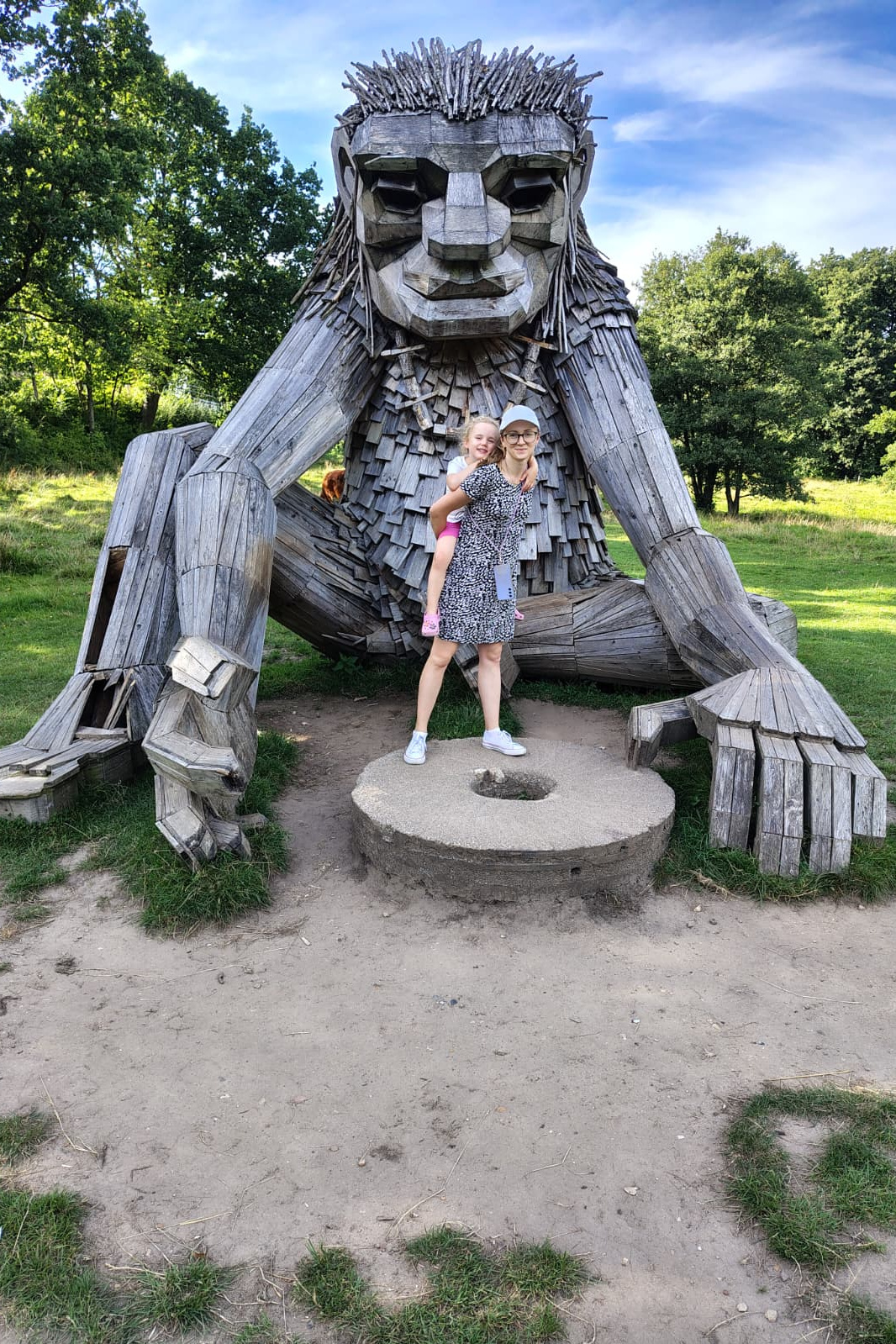
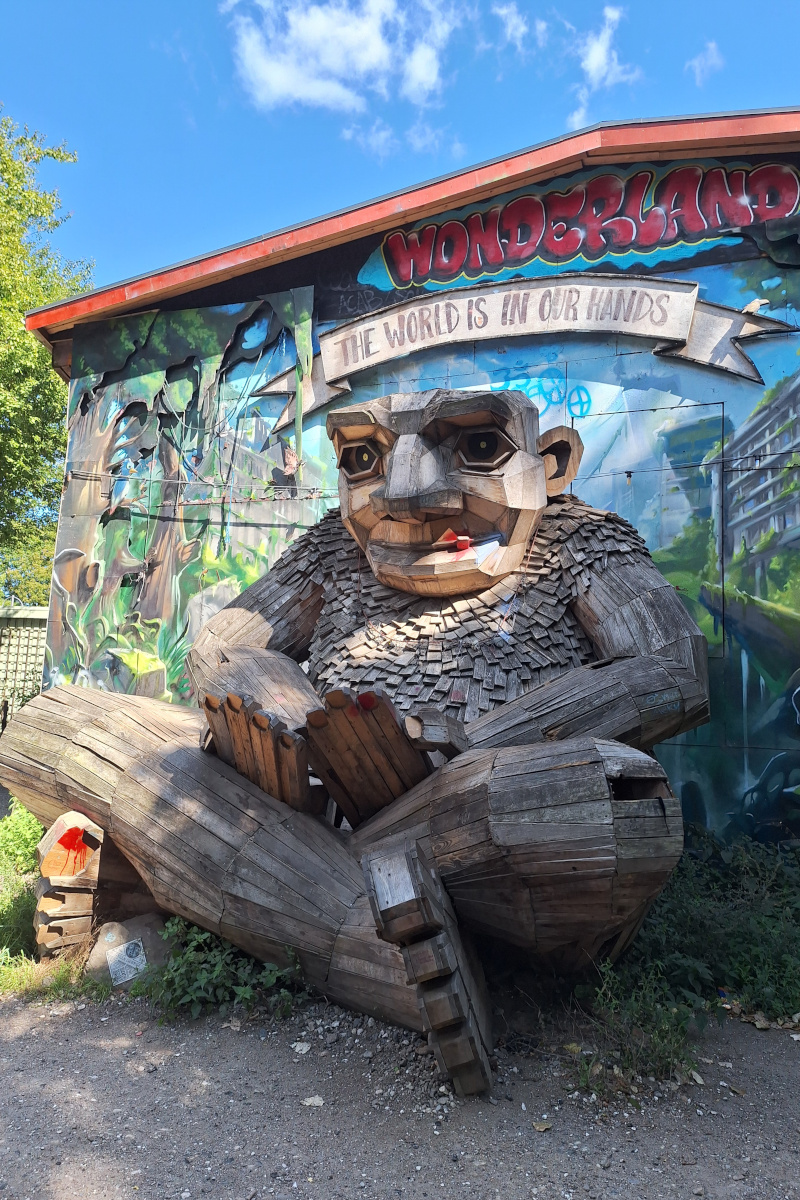
Practical notes and some surprises
- It was not easy to figure out what exactly the products in the supermarkets were, we had to translate the labels with our phones since the language was too different from the ones we know.
- Our Revolut virtual card worked almost everywhere except in Spar and Netto (we used a credit card there).
- “Pant” deposit applies to bottles and cans, and refunds must be used in the same shop (you can’t use it in another shop from the same chain).
- During the whole stay, I saw a Danish coin only once, when my husband found one in the park. It was a very strange feeling to travel for 10 days without using cash even once.
Final Thoughts and Recommendations
We’d definitely visit Denmark again but next time, perhaps add cycling (especially on islands like Fanø, which is perfect for biking at only 14 km long). This country is perfect for families, older travellers, and anyone seeking peace rather than nightlife. It’s less crowded than Spain or Italy even in summer, still full of charm. We would recommend to bring binoculars for spotting seals and other wild animals. Our unforgettable moments were:
- Flowering heaths on Fanø Island
- Seeing wild deer in Dyrehaven Park
- Cute wooden houses in Sønderho and Ribe
- Scenic drives along the coast with fishing town Gilleleje
- The stunning chalk cliffs of Møns Klint
Each of these will get its own detailed post soon so stay tuned!
Subscribe via RSS
